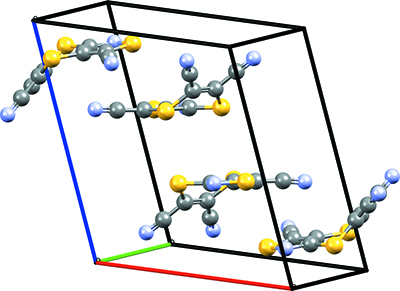Sixth blind test of organic crystal-structure prediction methods
 Organic molecules can have a remarkable array of solid forms, including different polymorphs and various multi-component systems, such as salts and co-crystals. The potential diversity of this solid-form landscape presents both opportunities and headaches for the practical use of molecules in solid forms.
Organic molecules can have a remarkable array of solid forms, including different polymorphs and various multi-component systems, such as salts and co-crystals. The potential diversity of this solid-form landscape presents both opportunities and headaches for the practical use of molecules in solid forms.
Experimental screening of the solid-form landscape can be a time-consuming and expensive process. It is therefore not surprising that over the past 25 years numerous computational methods have been developed to predict crystal structures, providing an alternative or supplement to experimental screening of solid forms and allowing us to explore the solid state of molecules that have yet to be synthesized.
Essentially, the ultimate goal of crystal-structure prediction (CSP) methods is to be able to explore the possible polymorphs, co-crystals, salts, hydrates etc. of a molecule based solely on minimal information such as its two-dimensional chemical diagram.
In the case of organic CSP, progress over the last 15 years has been charted by a series of blind tests of CSP methods that have been hosted by the Cambridge Crystallographic Data Centre (CCDC). Results from the latest study have recently been published in Acta Crystallographica Section B: (2016) Acta Cryst. B72, doi: 10.1107/S2052520616007447.
The sixth blind test of organic CSP methods was held with five target systems: a small nearly rigid molecule, a polymorphic former drug candidate, a chloride salt hydrate, a co-crystal and a bulky flexible molecule. The test has been the biggest to date, with 21 submissions attempting to predict one or more of the five target systems and four submissions re-ranking other predictions with different methods. The range of methods and approaches have shown the development of the field, with progress in the treatment of conformational flexibility in molecules, wider use of ab initio or ab initio-based methods for optimizing and ranking the final structures, as well as more well defined and systematic protocols for performing CSP calculations.


